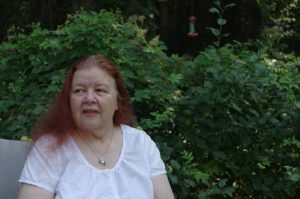Love and Death – the Twa sisters: author Elizabeth Creith’s inspiration for The Swan Harp

It’s an old, old story; two sisters are in love with the same man, and the elder sister drowns the younger in order to have him. For over five hundred years people in England, Ireland, Scotland, and also in Scandinavia have sung this story in ballads. There are over five hundred versions of it, with titles like “The Twa Sisters,” “The Cruel Sister,” “The Miller and the King’s Daughter,” “Binnorie,” and many more.
While the basic story of jealousy and murder remains the same throughout, details change. There may be two sisters, or three, or four. The youngest daughter may be pulled alive from the water, only to be killed by her “rescuer” for her jewellery. Sometimes the elder sister’s crime goes undiscovered and unpunished, and sometimes not.
Most of the English versions are straightforward tales of jealousy, treachery and death, but the Scandinavian ones often take a supernatural turn. In these versions someone makes a harp or a fiddle of the drowned woman’s breastbone, tuning pegs of her fingers and harp strings or fiddle strings of her hair. When this grisly instrument is played in the king’s hall, it names the dead woman’s sister as her murderer.
![]()
The idea for “The Swan Harp” first came to me when I was listening to Loreena McKennit’s song “The Bonny Swans,” a ballad in the cruel sister tradition. In her version there are three sisters, daughters of a farmer in the north country. The middle sister disappears entirely from the story after that single mention, and I wondered what had happened to her, and what her story was. Did she witness the murder? Was she afraid her sister would kill her, too? Did she run away, or did she go for help and to tell her father? I wondered how she might have seen the conflict in her family. The song doesn’t say.
Then I began to wonder about other anomalies. While the shape of a chicken’s wishbone might suggest the curve of a harp, a human breastbone does not. Would it be even remotely possible to make any kind of non-percussion instrument from it? Would human hair work as a harpstring? And why would the miller’s daughter describe a swan as looking like a woman?
One thing I knew would work is the harp apparently playing itself. At a campsite in the early 1980s I heard a harp do exactly this. The owner had set it upright on a stump, and as it sat there a light breeze blew through the strings. The sound the harp made was quiet but penetrating, a chord somewhere between a moan and a wail. It had the same quasi-vocal sound as a violin, and its unexpectedness gave it an eerie quality.
Slowly the story came together for me – a father who was described as both a farmer and, later, a king; three daughters instead of two; the conflation of drowned swan and drowned woman and, inevitably and woven through all of it, the presence and reality of magic.
After the time I’ve spent with this story, it’s no mystery to me how it has survived in so many places, in so many versions for so many centuries. I’m honoured to be a new, small part of this ancient tale’s lineage.

Elizabeth Creith is a writer and artist, and the author of The Swan Harp, the first book in the Wings of Valenia trilogy, coming from Type Eighteen Books in April, 2024.
